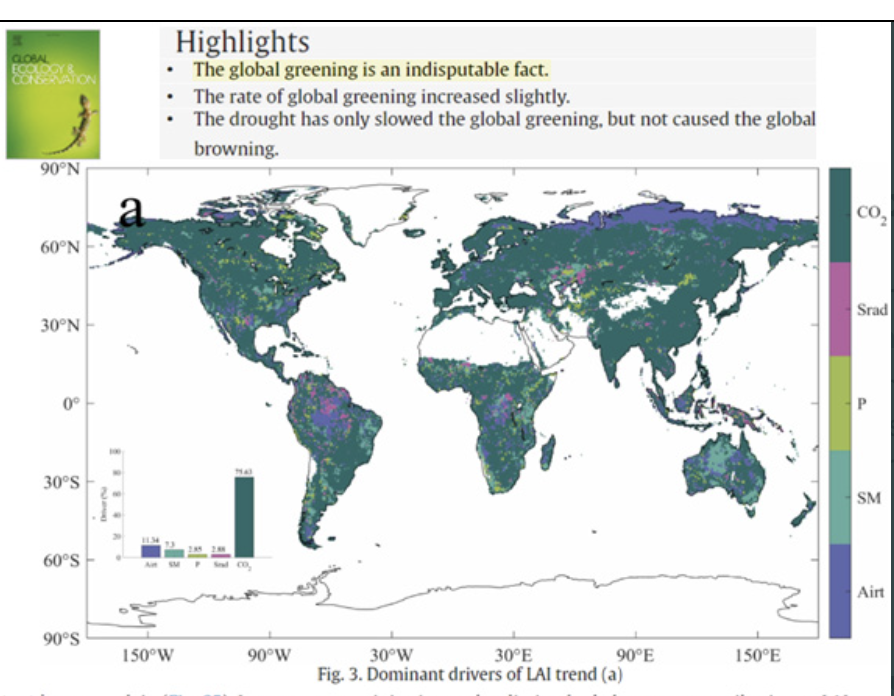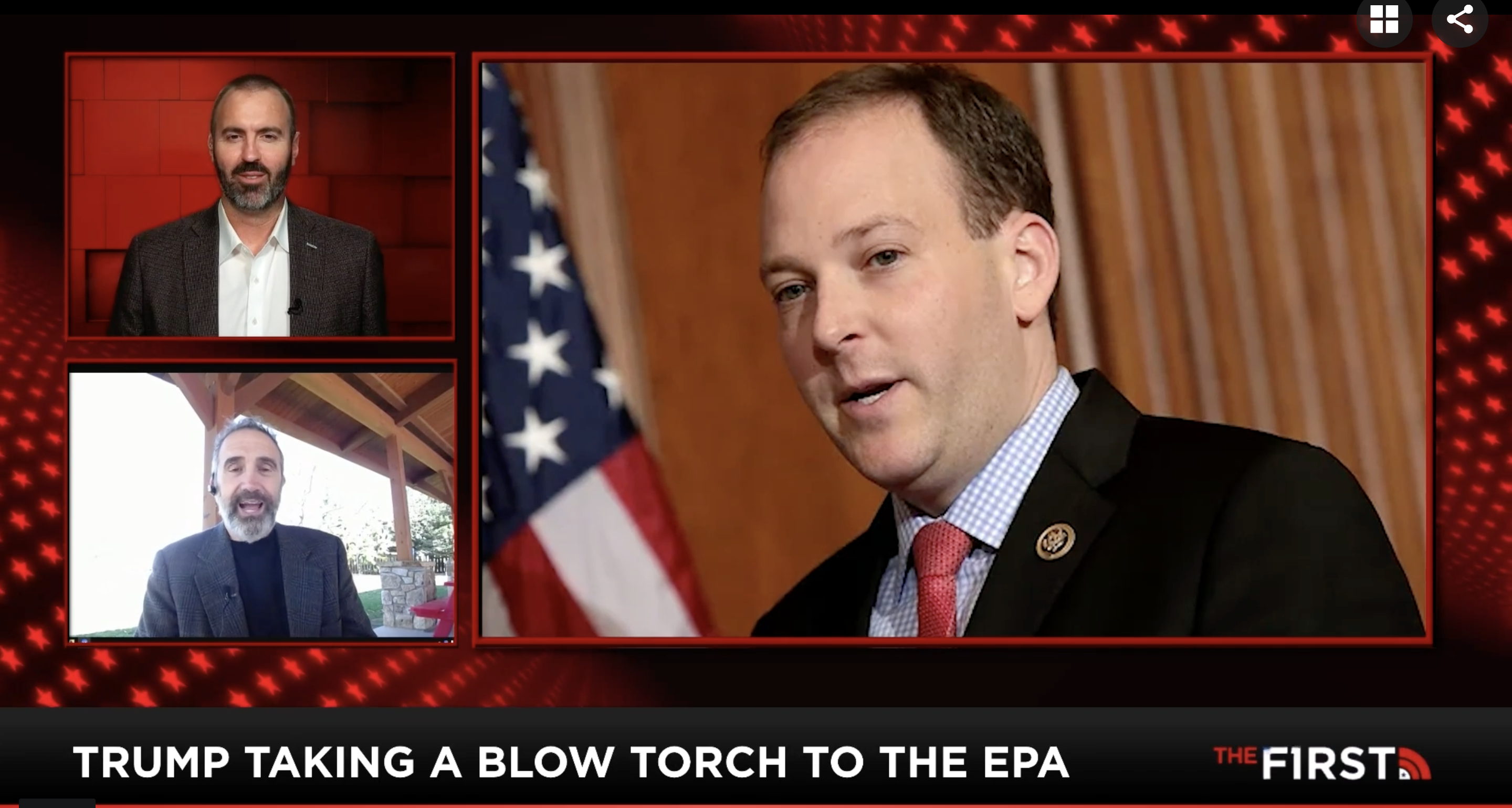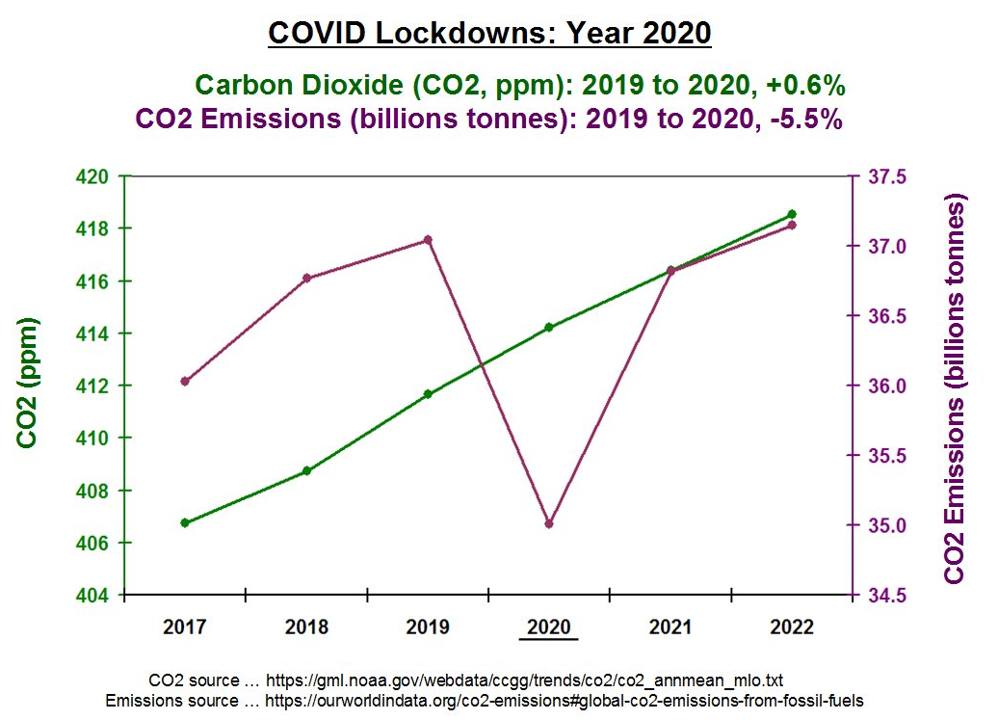Global greening is not only a fact it is accelerating. Seven times more area is greening than browning. All studies agree the world has become greener since 1982. If things are getting better with fossil fuels, why end them? https://t.co/ikHm5csMwY
— Andy May (@Andy_May_Writer) January 29, 2024
https://www.sciencedirect.com/science/article/pii/S2351989423004262
Global Ecology and Conservation
Highlights
- •
The global greening is an indisputable fact.
- •
The rate of global greening increased slightly.
- •
The drought has only slowed the global greening, but not caused the global browning.
Abstract
Increases or decreases in remote sensing-based vegetation greenness are usually referred to as greening or browning. The CO2 fertilization along with land management determined that greening is dominant. However, recently global browning signals due to drought stress have also been widely reported. In this study, We used the four latest leaf area index (LAI) datasets to explore this controversial topic, and found that global greening was not only present (trend between 3.1–6.4 ×10−3 m2 m−2 yr−1) but also continued (growth rate trend between 3.3–6.4 ×10−4 m2 m−2 yr−2) during 2001–2020. Greening acceleration occurred in 55.15% of the globe (positive trend and positive growth rate trend), while browning acceleration occurred in only 7.28% (negative trend and positive growth rate trend). Combined with meteorological variables, we found that CO2 change dominated the LAI trend, while climate change largely determined the LAI growth rate trend. Importantly, our study highlighted that drought trend did not necessarily trigger vegetation browning, but slowed down the rate of greening.
…
Conclusion
In conclusion, based on the latest remote sensing data, we explored the important issue of global vegetation change trends after 2000. Importantly, we introduced the concept of growth rate to characterize the rate of greening/browning. Our results showed that the global greening was still present in 2001–2020, with 55.15% of areas greening at an accelerated rate, mainly concentrated in India and the European plains, compared with 7.28% of browning. Multiple linear regression and partial correlation analysis agreed that CO2 dominated the LAI trend, while climate change determined the LAI growth rate trend. By analyzing different sub-regions of the globe, we found that the drought trend only slowed down global greening, but was far from triggering browning. These findings will improve our understanding of the processes within carbon cycle and narrow the research gap of better defining if the status of global vegetation is greening or browning in recent two decades.
#
Related:
2016: NASA: Carbon Dioxide Fertilization Greening Earth, Study Finds
Massive Increase in Global Greening as Extra Carbon Dioxide Boosts Global Crop Yields
New Peer-Reviewed study in Science Mag. reveals greening of the Earth by rising CO2 levels





